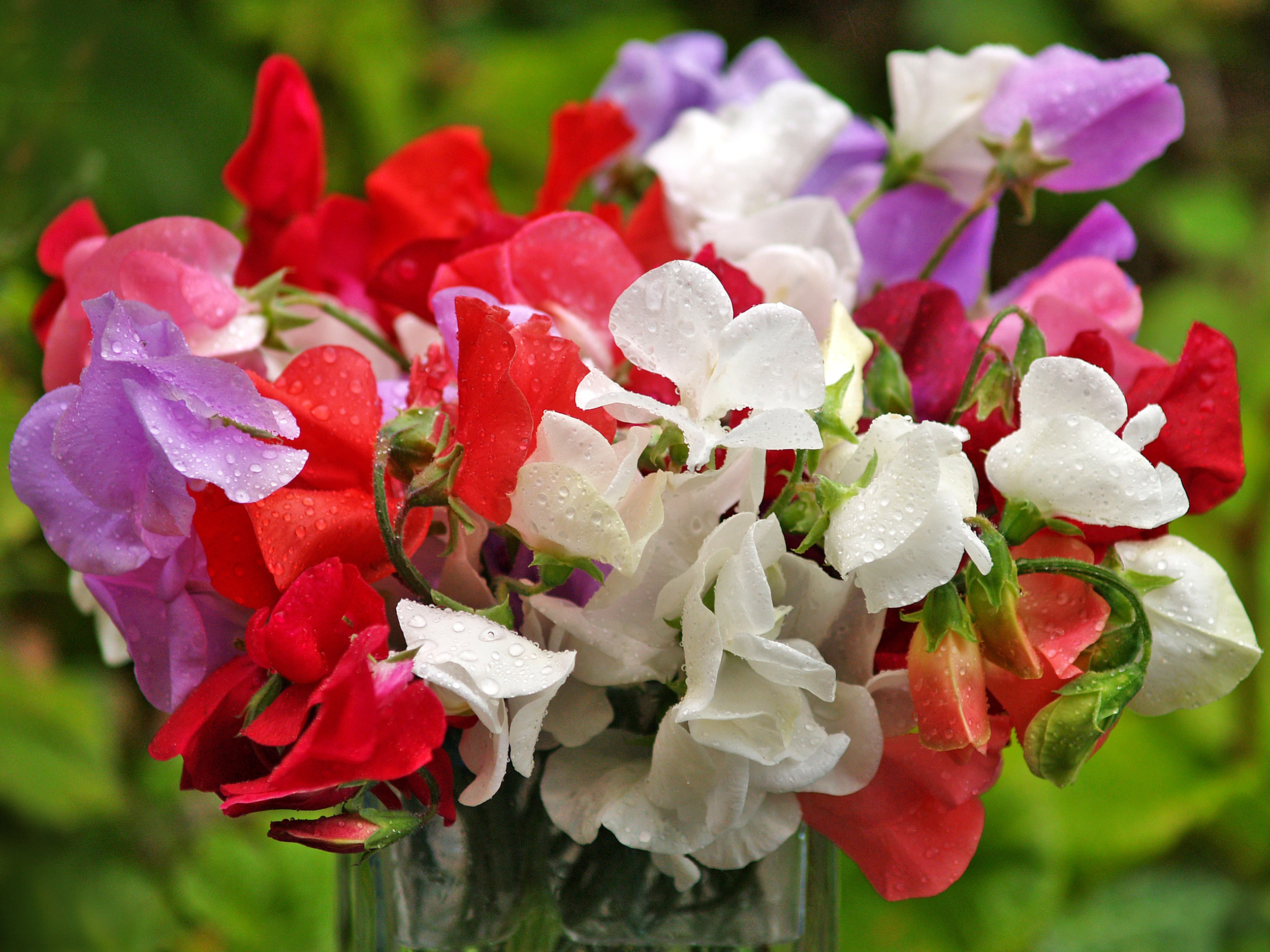We just opened up our popular flower share for 2021. This year, we are offering two seasonal shares, each with twelve weekly, or six bi-weekly, share options. We are also introducing a new monthly share option, which includes four weekly deliveries for the chosen month. All of our shares can be purchased in a bouquet or bucket size. We offer free delivery to many zip codes around our area, or shares can be picked up on our farm on Saturdays between 12 - 4.
Read moreFresh From the Farm
Lov’n Lisianthus
I’ve been channeling Khaleesi lately as I slay hundreds of Japanese beetles and decimate crabgrass and other ferocious weeds in an effort to save my precious dragon babies. With the warm weather, our snapdragons have been exploding! Unfortunately, so are the pests and weeds. Since we follow organic farming practices, fighting off these enemies requires a lot of manual labor and a little ingenuity. For most of our crops, we use landscape fabric to help fight the weed compaction and minimize soil runoff. I couldn’t imagine growing without it but it’s amazing how some weeds can still manage to invade, especially on recently converted land such as ours.
Our hard work is paying off with the best crop of snapdragons we’ve had thus far with long straight stems and a wide array of popping colors. They’ve been the showcase of our bouquets for the past two weeks combined with bacehlor buttons, sweet sultan, flowering tobacco, cerinthe, yarrow and recently celosia.
Snapdragons fresh from the field
Produce Share
We’re a few weeks into our produce share but still taking on new customers each week. Our last couple deliveries have included the following garden goodies, among others!
Green Beans
Just as our peas were coming to an end for the season, our green beans showed up in abundance. I typically plant both pole beans and bush beans. From a garden perspective, I prefer pole beans as they’re easier to pick and provide a beautiful trellis in the garden. However, after growing bush beans for the past two years, I think I’m happier with their quality. The ones we’re growing this year are smaller, like French-style beans, more tender and without the strings you often find in pole beans. This is the first year I haven’t planted pole beans. I meant to plant them but couldn’t find the seed packet when it came time to plant. I expect they are in one of our fields along with a pair of my glasses, which I seem to lose daily on the farm.
Squash
We have three types of squash in season right now - yellow summer squash, zucchini and patty pan. It’s possible that I started growing patty pan squash just because I like the name and they look cute However, it quickly became a favorite of mine even though it’s a little harder to sell as people aren’t really sure what to do with it. It looks a bit like a small pumpkin but is tender like a squash. It can simply be divided and baked, sauteed or grilled like any other squash but can also be stuffed for an elegant side.
Berries
We’ve been picking raspberries daily for the past two weeks and our blackberries are about a week out from being ready. One of the early mistakes I made in gardening was planting berry bushes in our raised bed garden because they took over the garden within a couple of years. Now our raised bed garden is strictly dedicated to berries and herbs with a few other vegetables where we can squeeze them in. Our berry bushes are screaming for more space so we may need to transplant them to a dedicated field in the fall.
Bok Choy
Bok Choy, also referred to as pak choy or pok choi, is a type of Chinese cabbage. It’s base is white and looks similar to celery with wide flat leafs. It can be eaten raw or cooked many different ways. One of the easiest ways is to saute it with in a little olive oil with garlic, shallots, sesame oil, soy sauce and optional red pepper flakes. It is also nice grilled with a similar marinade. I prefer keeping the stalks intact and quartering them but they can also be chopped. Sauteed Bok choy makes a great base for serving fish. I particularly like it with Salmon.
Lettuce
In addition to spinach, kale and arugula, we’re growing 6 different kinds of lettuce this summer, with more to come for the fall. Because I’m a little OCD about symmetry, we’ve got red and green varieties of butter, romaine and frisee. We try to include 1-2 varieties in each of our weekly shares.
Swiss Chard
Again, it’s likely that I started growing this for aesthetic reasons. I confess that I like the rainbow row in the middle of my garden. Plus, it’s turned out to be a real work horse in the garden. The more you cut, the more it produces. As a hearty green, it is often overlooked compared to Kale. It is actually a relative of beets. It can be eaten raw or cooked and makes a great addition to pasta, soup or quiches. Or, you can saute it with simple seasoning of your choice for a beautiful and nutritious side dish.
Featured Farms
Over the past two weeks, we’ve featured some great local farms and businesses in our CSA deliveries. The first was Spring Valley Farm and Orchard, which I happened upon while driving my daughter to work at a camp in West Virginia.
Spring Valley Farm and Orchard
Eli and Misty Cook farm 345 acres in the rolling hills and valley of Augusta, West Virginia. I passed by one of their markets outside of Winchester, Virginia and was immediately drawn in. Upon entering, I was greeted by glorious tables of fresh fruits and vegetables as well as intriguing shelves full of their farm made canned goods. I purchased fresh peaches and peach salsa for our CSA members. Within the DC area, Spring Valley sells their produce and farm-made goods at farmer’s markets in Silver Spring, DuPont Circle and Mosaic in Virginia.
Chop Shop
Last week we featured Chop Shop in our CSA share. Though not a local farm, they are my favorite local butcher and they sell many local products. Owner John Grande and his wife, Nancy, opened Chop Shop on Darnestown Road in 2017 and we’ve been avid customers ever since. John, a former meat manager at Balducci’s, has, in my opinion, the best gourmet meat cuts in town. In addition, you can often find our Pleasant Hills eggs on their shelves when they are not sold out. I love their thick-cut bacon and handmade sausage. We included their broccoli-rabe and provolone sausages in last week’s produce share, along with our homemade zucchini relish, which I think is perfectly paired with it and John agrees!
Deer Run Farm
I was introduced to Deer Run Farm a few years ago when my first chicken flock was decimated by a raccoon attack. I woke up to an absolute crime scene in our back yard and was desperate to protect our kids from the devastation so I proceeded to try and collect every feather left behind and thought I could simply replace the chickens with identical ones before they returned from school. I soon realized that was not possible and now appreciate that children on a farm need to learn the facts of farm life, some of which are more difficult than others. Regardless, a friend introduced me to Allison at Deer Run farm, who provided me with our replacement chickens and we’ve been getting chicks from them ever since.
Deer Run Farm has been operating in Frederick County since the 1990s raising Registered Red Angus cattle. In 2017, they acquired a successful preexisting poultry operation, which they have taken to the next level. Their hatchery is currently focused on four chicken breeds - Ameraucana, Welsummer, Marans and Delawares. They can proudly boast that they have shipped chicks to all but one of the 50 states and we are working on getting that last state (South Dakota!!!) checked off the list. Deer Run sells their farm goods, including beef cuts, pasture raised chicken and eggs online, at their onsite farm store and at four local farmer’s markets including the Fulks Corner Market in Gaithersburg. For this week, we’ve included their amazing beef jerky snacks in our CSA shares.
Peas Galore!
Our gardens are overflowing with cascades of pea vines inching their way across trellises with abundant fragrant flowers and pea pods. I love it! This year, I planted some in each of our gardens. They’re growing along with herbs and berries in our raised beds. I have snow peas and snap peas in the vegetable garden and sweet peas, along with a few other ornamental varieties, in the flower garden.
Flower Share
Sweet Peas
For the past two weeks, I’ve been trying to incorporate sweet peas into our flower shares. While they grew abundantly this year, I’m afraid we’re in for a short season due to late planting with the wet and crazy spring we’ve had.
This is my third year growing sweet peas and I am definitely still learning! While I love their romantic fragility and sweet fragrance, I tend to favor larger statement flowers and I struggle with how to incorporate small delicate sweet peas into arrangements and bouquets. I prefer to enjoy them scattered around the house in the many small vintage vases I’ve collected over the years.
I sow our first sweet pea seeds indoors in January. All peas germinate best if they are pre-sprouted first, which simply means soaking them in water for overnight or in a damp paper-towel in the fridge for 3-4 days. Most peas and legumes can also benefit from adding inoculant to the pre-soak, which adds bacteria and nitrogen to support their early growth. Sweet peas grow fast long roots so I plant them in 3” pots under our grow lights. After they reach 4-6'“ tall, I give them them a hard pinch back to the lowest set of leaves, leaving two or three leaf nodes, to encourage the plant to branch vigorously from the base.
The earlier you plant sweet peas, the better as they are cool weather plants. I aim to plant ours by mid-April. They require rich soil, so I dig a trench and add compost before placing the plants roughly 8” apart on either side of a trellis. Sweet peas also need consistent moisture so we use a drip line across the row and feed them weekly with compost tea.
In order to achieve long straight flower stems, which I’m still striving for, it’s important to regularly tie the growing pea tendrils to a trellis for support. I hope next year will be my sweet pea bumper crop year as I plan to start them earlier in our new geo-thermal hoop house.
Sweet Peas Growing in our Flower Garden
Sweet peas incorporated into one of our flower share bouquets
Produce Share
We kicked off our produce share last week with lots of beautiful greens and bags full of snow peas and snap peas. Last week’s herb selection included dill, tarragon and rosemary. We also harvested zucchini blossoms and garlic scapes , signs that the zucchini and garlic will soon be ready for harvest.
Snap Peas
I prefer snap and snow peas raw and enjoy them straight off the vine as I’m harvesting. One of my favorite salads is a sliced snap pea salad, which is beautiful, fresh and delicious.
Zucchini Blossoms
Stuffed zucchini blossoms bring a little bit of Tuscany into your kitchen. Mix ricotta cheese with grated Romano cheese and mozzarella, garlic salt and pepper. Prepare a batter with milk, egg and flour to dip the blossoms in before sauteing in olive oil, flipping once until both sides are light brown. Top with fresh chopped parsley or basil.
Garlic Scapes
Like most plants, garlic plants can produce flowers. The flower stalks that begin to twist out of the garlic foliage about a month before the garlic is ready for harvest are called scapes. In my opinion, they are the best part of the garlic plant and why I love growing garlic. Without scapes, I’m not sure I would have the patience to grow garlic. Garlic is planted in the fall, goes dormant in the winter and then begins to grow in the spring. By May, scapes will begin to appear in most hardneck garlic varieties. They should be cut while they are still tender and the necks twisted into one loop. Cutting the scapes redirects the plants energy into growing a larger bulb. If you leave the scapes on, they will straighten out and grow tall and then will be too tough to eat. Some growers believe leaving the scapes on will improve garlic storage although the bulbs will be smaller.
When the scapes are straight and tall and no more than a quarter of the garlic plant’s leaves have turned brown, the garlic is ready to be harvested. Unfortunately, they can’t yet be enjoyed. After harvesting, garlic needs to cure 4-6 weeks or longer depending on the heat and humidity. We harvested our garlic this week (250 bulbs) and it is now hanging in our garden shed curing. CSA members can expect delicious garlic bulbs in a couple months.
My Favorite Uses for Scapes:
Pesto - By far, my favorite use of scapes is pesto. I make several batches when scapes are in season and freeze to enjoy all year.
Grilled - Fire up the grill, season the scapes with olive oil, salt and pepper and throw them on. Flip them a few times until they are charred in spots and softened. They mellow in flavor significantly and are bit like garlicky asparagus.
Scape Butter - Soften butter to room temperature and saute scapes in olive oil until softened but still green. Finely chop the scapes and mix with your herbs of choice (I like a mix of thyme and tarragon) and mix into butter. Spread on wax paper and roll into log. I then freeze the log and cut off pieces to use in all kinds of recipes or just garlic bread.
Featured Local Farm
As a special welcome gift for our produce share members, we included a bottle Rosé wine from our neighbors Windridge Vineyards in their first delivery. Windridge is a local family-owned company that has been farming in the Poolesville - Darnestown area for since the late 50’s. They planted their first vines in 2011 and opened their outdoor tasting pavilion last year just up the road from us at their vineyard on Darnestown Road. This year, they will open a new indoor tasting room. If you haven’t yet visited them, you should definitely add it to your summer plans. The view from their tasting pavilion looking over the vineyard is breathtaking and their wine is very good. They are open from 12-6 Wednesday and Thursday for wine pickup (you can also order online) and you can stay and enjoy wine and watch the sunset on Fridays and Saturdays until 9pm or come for a picnic lunch on Sundays from 12-6. They usually have a local food truck or bring your own food. There is plenty of room for social distancing!
Peony Passion
Peonies have long been one of my absolute favorite flowers. I love their enormous full blooms and fragrance. I just wish they had a longer bloom season but I anxiously await for them to bloom each May. I was thrilled to find a nice big patch of peonies emerge in the garden during our first spring on the farm. Since then, I’ve divided and multiplied these original peony plants and planted over 100 new peonies in our flower field. I plan to add another 100 this fall as well.
Peony Varieties
Paeonia, it’s botanical name, come in the form of herbaceous (bush) peonies as well as tree peonies. Herbaceous peonies typically bloom in mid to late May in our area and grow up to 4 feet tall with flower blooms around 6 inches in diameter. They can also be easily propagated through division (more on that later), whereas tree peonies cannot. Tree peonies bloom 2-4 weeks prior to Herbaceous peonies and can grow up to 10 feet high. They will lose their leaves in the fall but maintain a graceful branching structure, while herbaceous peonies should be cut to the ground in the fall.
A Somewhat New Introduction
Following WWII, a Japanese botanist, Dr. Toichi Itoh was the first to successfully create a modern hybrid of the two varieties, aptly named Itoh, or Intersectional, peonies. Other botanists around the world had unsuccessfully pursued this goal for decades due, in part, to the difference in bloom times between the two varietals. Interestingly, Dr. Itoh patiently cared for his young seedlings for over eight years before his death in 1956 without ever seeing one bloom. His family continued his pursuit and finally brought them to flower in 1964. Subsequently, they were imported into the US and are growing in popularity.
Most cut flower production in the US comes from herbaceous varieties but tree and Itoh peonies remain popular for landscaping and botany enthusiasts. At Pleasant Hills Farm, we grow herbaceous peonies. My modest patch, which will hopefully someday be an entire field is mostly filled with soft pink and white peonies favored by brides. However, I’ve been testing some beautiful coral and red peonies and love what I’m seeing!
Growing Peonies
Herbaceous peonies grow each year from an underground crown, which should be planted in the fall. The most important factor in planting peony crowns is depth. The eyes of the crown, where the growth originates, should not be more 1 inch below surface. Chose a site with good drainage and preferably full sun, although peonies will tolerate light shade. Peonies need plenty of water but should not be allowed to get water logged.
After planting, mulch the area to provide winter protection to the young plants. Because we don’t use any chemicals on our farm for weed control, we heavily mulch the first couple of years but then it is important to ease up so that the roots don’t get buried too deeply, reducing critical oxygen and water penetration to the roots.
Patience is Key. Most peonies will not bloom the first year after planting and often take three years to really hit their stride. As my husband will tell you, I’m not the most patient person in the world but I even I think peonies are well worth the wait! In the fall, whether you have a bloom or not, cut the peonies to the ground and discard the waste to avoid foliar diseases for the next year.
Those Darn Ants! About the only real pest threat for peonies are ants but they aren’t really a threat. In my experience, ants do no real harm. They often appear as the buds swell, dining on the sugary substance created by the budding. Some believe the ants actually help the buds open. Either way, they will disappear once they do.
Multiply Your Investment
One of the things I love best about peonies is that they can easily be divided to grow new plants. They can also be easily moved so if you invest in peonies and then move homes, just dig them up and take them with you! Peonies should be divided in the fall. To do so, dig up the roots, being careful to dig a wide circle around the plants so as not to damage the roots. Lessons learned from me - divide before you cut the plants back for the season or it won’t be as easy to know where to dig!
Once the roots are out of the ground, rinse them vigorously with a hose so that you can clearly identify crown buds. After rinsing, I suggest leaving the roots in the shade for a day or two so they soften up and are easier to cut but not longer! I start with cutting long roots back to only about 6 inches of the crown. Don’t worry, the crown will grow new roots! Cut the root into pieces with a sharp knife so that each division has at least one crown bud, or eye, but three visible buds are best.
Harvesting Peonies
While I’m sad that I can only harvest peonies for two weeks a year, I do appreciate their long vase life and the fact that you can store them in a cooler or refrigerator for several weeks for future enjoyment. It is beautiful to see full peony blooms in your garden but if you want to enjoy cut peonies, you need to harvest them well before they are in full bloom. It is best to harvest cut peonies when the first true color appears at the tip of the bud and the bud has started to soften (see picture above). When harvested in what I like to call “marshmallow” stage, they can be stored dry in a cooler or refrigerator. Strip off all the leaves except a few small ones near the bud. I then loosely wrap them in paper towels and then plastic wrap, sealed at both ends to keep moisture in if I am harvesting a small bunch. For larger harvests, I put them in a box lined in plastic and separate layers in plastic. Store them horizontally but I recommend not keeping them in a refrigerator where you store fruits as the ethylene gas that fruit gives off when ripening can cause the flowers to prematurely age. Side note - keep flower bouquets away from fruit to last longer!
When you are ready to enjoy the peonies, simply take them out of storage, snip the ends and put them in room-temperature water and they will begin to slowly open up within hours.
A few weeks before peonies are ready for harvest, cut flower growers will typically “disbud” each peony stem by cutting off lateral buds, thereby increasing the size of the primary flower. I follow this practice for about half of my peonies because I do like the look of the smaller buds in arrangements.
Even if you are growing peonies for landscaping, it is good practice to cut a fair number of the stems to take inside and enjoy. This redirects the plants energy away from the bloom and into the root growth for future abundancy.
If you are interested in more information and hands-on knowledge about peonies, look for future on-the-farm classes for planting and dividing peonies in the fall and harvesting in the spring.
August 5 CSA Newsletter
In a Pickle
Not surprising to the Van Liere's in my family, the phrase has Dutch origins. Growing up, I'm sure I must have heard my grandmother utter "in de pekel zitten!", deferring to her native language when frustrated, which was often with so many grandchildren running around. The phrase supposedly has two meanings - to be in a difficult situation or to be drunk. I'm pretty sure my grandmother would have been referring to the first meaning, which alludes to the idea of being mixed up and disoriented in a packed jar of pickles.
Ironically, today I find myself in a bit of a pickle with my garden overflowing with more cucumbers than we can possibly consume. So what to do? Make pickles of course! I would think this situation could well explain the use of this phrase. Canning also reminds me of my grandmother. She canned everything my grandfather grew in his garden for us to enjoy year-round and she made the best bread and butter pickles! Over the past few years, I've been trying to perfect my recipe to match hers. I've tried several different variations though I think this one comes the closest.
Grandma's Bread and Butter Pickles
Use fresh crunchy cucumbers. Any variety will do but I prefer pickling or english cucumbers. The key is that they are all around the same size. During processing, each piece of produce should be heated to the same degree If the pieces vary too much in size, smaller pieces will soften and the larger pieces may not be heated sufficiently for canning.
Ingredients
10 cups cucumbers, sliced about 1/4-inch thick
2 medium onions, thinly sliced
1/2 cup pickling or canning salt
3 cups white vinegar
2 cups granulated sugar
2 tbsp mustard seeds
1 tsp celery seeds
1 tsp ground turmeric
1. In a glass or stainless steel bowl, combine cucumbers, onions and salt. Mix well, cover with cold water and let stand at room temperature for 2 hours. Transfer to a colander placed over a sink, rinse with cool running water and drain thoroughly. Though it's not necessary, I find that letting the cucumbers sit overnight, either in the colander or in a single layer on cookie sheets lined with paper towels, results in crunchier pickles.
2. Meanwhile, sterilize clean canning jars by boiling for 10 minutes. If you plan to preserve the pickles, do this right before filling the canning jars so that they are hot when filled.
3. In a large stainless steel saucepan, combine vinegar, sugar, mustard seeds, celery seeds and tumeric. Bring to a boil over medium-high heat, stirring to dissolve sugar. Stir in vegetables and return to a boil for ONE minute. Using a colander, drain the liquid into another stainless steel or glass bowl.
4. Pack the vegetables into hot jars to within generous 1/2 inch to top of jar. Ladle hot pickling liquid into jar to cover vegetables, leaving 1/2 inch headspace. Gently room air bubbles with (I use handle portion of small spoon to push down the vegetables). Wipe rim. Center lid on jar. Screw band on tight. At this point, you can refrigerate or can the pickles. Refrigerated pickles will last for up to 3 months. Regardless, let stand at least 24 hours in the fridge before serving. For best results, allow pickles to marinade in refrigerator for a week to allow flavor to fully develop.
5. If canning, place jars in canner, ensuring they are fully covered with water. Bring to a boil and process for 10 minutes. Remove canner lid. Wait 5 minutes, then remove jars, cool and store.
This Week's Flower Share
Our zinnias have arrived in full force and are the focus of this week's flower share. The tropical colors will brighten anyone's day! The bouquet shown here is an example of this week's share. In addition to zinnias, the bouquet includes celosia, scabiosa, aster, snapdragons and love in a puff. Each bouquet is individually and uniquely assembled.
Follow these instructions for optimal vase life of your flower share:
Upon arrival, immediately put flowers in fresh water along with provided flower food. You do not need to recut stems on day of arrival because they will already have been cut that day, unless you want to for arrangement purposes.
Trim at least a 1/2 inch from the bottom of stems and completely replace water every other day.
Keep flowers away from heat and bright light.
Do not place flowers near fresh fruit. Fresh fruit emits Ethylene, a plant hormone, as it ripens which also causes the flowers to drop their petals, thinking that it is time for them to seed or fruit.
This Week's Produce Share
Homemade Bread & Butter Pickles
Cucumbers
Orange Cherry Tomatoes
Blackberries
Green Beans
Red Cabbage
Green Peppers
Garlic
Recipe Suggestions
Ingredients
1 1/2 cups all-purpose flour
1/2 cup sugar
1 1/2 teaspoons baking powder
1/2 teaspoon salt
1 teaspoon cinnamon
9 tablespoons cold butter
1/3 cup boiling water
2 tablespoons cornstarch
1/4 cup cold water
1 tablespoon lemon juice
4 cups fresh blackberries
1/2 cup sugar
1. Preheat oven to 400 degrees.
2. For the dough, mix the flour, 1/2 cup sugar, baking powder, salt and cinnamon in a large mixing bowl. Cut in the butter until it is a course, crumbly texture. Pour in the boiling water and stir well so that all of the dough is wet. Set aside.
3. To make the filling, dissolve the cornstarch in the cold water. Add the berries to a large, deep cast iron skillet over medium heat. Add the cornstarch, lemon juice, and sugar to the pan and stir well.
4. Heat mixture over medium heat until boiling, stirring frequently. Remove from heat.
5. Drop pieces of dough over the berry mixture and place cast iron skillet on a foil lined cookie sheet and place in the oven. Bake for 20-25 minutes, until the dough is golden brown and the berries are thick and bubbly.
6. Serve hot with vanilla ice cream.
Note: If you don't have a cast iron skillet, you can cook the berries in a saucepan and bake in a 9x9 baking dish.
July 24 CSA Newsletter
The Farm Life
I'll be the first to admit that this endeavor to return our small portion of the historical Pleasant Hills Farm to working condition has been a bigger undertaking than I had imagined. I have a new profound appreciation for farmers who worked this land many years before us as well as our family members who have farmed for generations. Granted, our small parcel of land would probably not even be considered a farm by their standards but they've also had the benefit of much larger equipment and, in many cases, chemicals to help combat unwanted pests and weeds. We've chosen to forgo the use of large equipment (although I am quite fond of my little green John Deere tractor) to preserve fossil fuels as well as the use of any use of chemicals, which certainly makes the job more difficult but we believe the benefits are definitely worth it.
When we moved to the farm, I idyllically envisioned a simpler and slower-paced life away from the city. I've since realized that only people who visit farms as a weekend getaway, as I had done in the past, would romantically consider this a simpler and slower-paced life! For sure, our priorities and interests have changed since moving to the farm and we do find enjoyment and appreciation in the simpler things in life. Yet, I certainly wouldn't consider working from dawn to dusk against the elements of nature to complete the daily and seasonal chores required of a farm an easier life. My aching body at the end of the day can also attest to the fact that it is definitely not slower-paced. Still, I have no regrets or disappointment. I've found the gratification of the farm not in its simplicity, as expected, but in the hard work that it requires of me and the reward it provides in return in the form sustenance for our family and the ability to share the fruits of our effort with others.
When the weeds, the woodchucks or the Japanese beetles appear to be winning my ongoing battle with them, I sometimes question my decision to try my hand at farming. Then there will be times when we get to enjoy the satisfaction of completing a big project, such as the installation of an irrigation system, for no more than a brief moment before the next looming project comes barrelling down on us, such as cleaning up the damage caused by flooding rains. But at least once a day, whether it's on a trailride with my daughter, watching a beautiful sunrise or set, or collecting the harvest of our hard work, I realize that we've absolutely made the right decision and I wouldn't change a thing.
This Week's Flower Share
I thought I would provide a glimpse of what Saturday mornings often look like in our breakfast nook. As you can see, there is no sign of a nice homemade breakfast, much to my family's dismay. Eventually we'll move flower production to our garden shed, where we'd like to install a utility sink and walk-in cooler, but that is somewhere down the growing list of farm projects. Until then, I will continue to assemble our flower harvest on the old barn table in the breakfast nook while the kids help themselves to cereal in the kitchen.
This week's harvest includes several varieties of celosia, yarrow and scabiosa along with a few snapdragons and aster, both of which are about a week out from reaching a good cutting length in our garden due to a late planting. I also included some white hydrangea, which grows abundantly in our front lawn. And, we harvested our first sunflowers! The are now towering over the rest of our garden and will certainly be a focal point in future shares.
This Week's Produce Share
- Green Cabbage
- Zucchini
- Corn
- Cucumbers
- Onions
- Eggplant
- Chicory
- Jalapenos
- Red Potatoes
- Cilantro
Recipe Suggestions
One of my favorite summer-time family meals is street-taco night, which are really just mini fajitas but it sounds more nouveau. Preparation isn't that difficult if you can multi-task well in the kitchen. In order to feed a family of 6 healthy eaters and have a variety of left-overs, I usually prepare 2 meats and 1-2 vegetables along with an assortment of accompaniments. A typical meal might include:
- Grilled Skirt-Steak (I prefer hanger steak using either a store-bought thai marinade or the marinade recipe in the grilled cabbage link below.)
- Slow Cooker Pork Shoulder (recipe below)
- Grilled Corn, seasoned and cut off the cob
- Grilled Cabbage (recipe below)
- Rice seasoned with lime and cilantro
- Black Beans
- Salsa
- Guacamole
- Queso Blanco Cheese - I like crumbly Cotija
- Warm Tortillas
Grilled eggplant can also make a great substitute for the meat. Everything, except the meat, can be cooked in advance and served at room-temperature. I like to prepare one of the meats in the slow-cooker and grill the other so that the only real last minute preparation is the grilled meat.
I found this recipe for grilled cabbage within a recipe for steak fajitas on Epicurious and have adapted it for many different uses, including my new favorite summer family meal - make-your-own street tacos!
This recipe results in a deliciously moist pork that breaks apart with a fork. The zesty basil sauce is amazing. I use it in a number of recipes.
Zucchini 1.0
If you've ever had a lived on farm, had a garden, or belonged to a CSA before, you've probably experienced a zucchini overdose, a common fresh-foodie ailment that occurs towards the end of the summer. Zucchini is one of the most abundant vegetable plants. Just when you think you've had enough, it keeps on giving. Luckily, there are numerous delicious recipes for zucchini ranging from breakfast to dessert and all the meals in-between. We'll try not to let you overdose but don't be surprised to find a zucchini in most of our upcoming shares. Feel free to raise a hand and say "whoa" when you've had enough! In the meantime, I'll share some of my favorite zucchini recipes in our newsletters.
Zucchini Egg Bites
I adapted this recipe from one of my mom's go-to brunch recipes, which explains the Bisquick, a common ingredient in circa 1970 casseroles . Although I can now make it by heart, I still pull out her old stained recipe card each time I make it. As a gluten-free alternative, you don't really need the Bisquick. I follow the recipe rather loosely, using whatever cheeses and fresh herbs I have on hand. I like to make these on Sunday morning for the family to enjoy whenever they saunter into the kitchen looking for breakfast, by which time I'm usually in the barn or out in a field. The recipe makes plenty and can easily be doubled, providing a quick on-the-go breakfast during the week. They're even good cold!
Makes 18
Ingredients
- 3 cups shredded zucchini
- 1 cup Bisquick
- 3/4 cup chopped onion
- 3/4 cup shredded cheddar cheese
- 1/4 cup Parmesan cheese
- 1/4 cup chopped parsley
- 2 T chopped garlic
- 1 t salt
- Dash pepper
- 1/3 cup olive oil
- 6 eggs, lightly beaten
Preheat oven to 350. Mix all ingredients well, pour into lightly greased muffin tins (fills about 1 1/2 tins, depending on tin size). Bake for 30 minutes or until firm to touch. This recipe can also be prepared in a 9 x 11-inch baking sheet, as my mother use to make it.
July 8 CSA Newsletter
Red White and Blue... Green, of course, too!
We're continuing our Independence Day celebration as the theme for this week's CSA share because celebrating the 4th of July in the middle of the week just isn't right!
Around the Farm
Steve has become quite the expert trapper collecting and relocating all the uninvited critters who've taken up residence on the farm after realizing it's a great place for fresh produce and free-range chickens. So far, he's caught 4 woodchucks (Sweet Potato, Chestnut, Parsley and Cilantro), 1 fox (Pollo) and 2 raccoons (Mulberry and Chip) - all aptly named after what they've been stealing! In case you're wondering, Chip actually stole a bag of Sunchips.
Our chickens and ducks have also made themselves at home on the farm running around the yard all day and then returning to the super-coop that Steve built for them. Despite the number of trespassers we've had, we haven't lost a chicken or duck yet (knock on barn wood). At least for this summer, we've given up on any hope of decorative flower beds around the house thanks to the chicks. Luckily, we can get our flower fix out in the field. Our new spring chickens are just beginning to lay eggs so we expect to triple our egg capacity soon!
This Week's Flower Share
Following the red, white and blue theme, this week's flower share includes blue hydrangea, sweet william, white and blue veronica, platycodon grandiflorus (balloon flower), lavender, oregano and lemon basil.
This Week's Produce Share
Cabbage
Corn
Cilantro
Cucumbers
Green Beans
Onions
New Potatoes
Jalapeno Peppers
Bell Peppers
Recipe Suggestions
Serves 6
3 large bunches beets
2 tablespoons extra-virgin olive oil
1 bunch swiss chard
1 large red onion, chopped
1/2 cup golden raisins
1/4 cup pine nuts
1/4 cup red wine vinegar
1 tablespoon ice water
1 tablespoon grainy mustrd
1/2 cup extra-virgin olive oil
Kosher salt and freshly ground pepper
8 ounces crumbly goat cheese
Preheat oven to 400. Scrub the beets, toss them with olive oil, and spread them in a baking pan. Roast until very tender, 50 to 60 minutes. Let cool slightly, then rub off the skins under running water. Cut the beets into 1/4" pieces.
Fold Swiss chard leaves in half lengthwise and cut stalks away from leaves. Cut leaves coarsely into 1-inch pieces. Slice stalks thinly crosswise. Reserve stalks and leaves separately. Cook chopped leaves in large pot of boiling salted water until just tender, about 1 minute. Drain and reserve.
Heat oil in heavy large pot over high heat. Add sliced stalks; sauté until starting to soften, about 10 minutes. Add chard to leaves to pot; stir to heat through. Remove from heat and let cool to room temperature. Mix with 4T red wine vinaigrette and stir to blend. Season with salt and pepper. Transfer to large platter and sprinkle with beets, onion, goat cheese, pine nuts and raisins.
Red Wine Vinaigrette
whisk the vinegar, water, mustard and olive oil together in a small bowl and season with salt and pepper. The vinaigrette can be stored in an airtight container in the refrigerator for up to 1 month.
Chilled Sweet Corn Soup
Recipe from Mario Batali's America Farm to Table cookbook
Serves 4 to 6
Ingredients
10 ears sweet corn husked
2 carrots
4 leeks, split and rinsed well, white and light green parts cut into 1/4 inch half-moons, dark green parts cut into 1-inch pieces
1 onion, halved
4 quarts cold water
3 tablespoons extra-virgin olive oil
1 large red onion, cut into 1/4-inch dice
1 large yukon potato (about 1 pound), peeled and cut into 1/2-inch dice
Kosher salt and freshly ground white pepper fresh mint leaves
1 cut crème fraîche or Greek yogurt
4 tablespoons freshly grated horseradish, plus a piece to grate over the soup
Using a sharp knife, cut the kernels from the corncobs and place the kernels in a bowl. Using the back of the same knife, scrape the cobs to extract the creamy, intense liquid and place into the bowl with the corn. Place the cobs in a stockpot with the carrots, the green parts of the leeks, the yellow onion and the water. Bring to a boil and cook until the liquid has reduced to 8 cups. Strain into a large bowl, discarding the solids, and set aside.
In a 6-quart saucepan, heat 2 tablespoons of the oil over medium heat. Add the red onions and the white parts of the leeks and cook until translucent, about 6 minutes. Add the potato and cook for minutes more, then add the warm corn stock and bring to a boil. Cook until the onions and potatoes are very soft, about 10 minutes. Reserve 1/2 cup of the kernels for the garnish; add the rest and cook until soft, about 4 minutes. Puree with an immersion blender and season with salt and white pepper. Cover and chill for at least 2 hours.
In a small sauté pan, heat the remaining 1 tablespoon of oil, the add the reserved 1/2 cup of corn kernels and sauté until slightly browned. Remove from heat. In a bowl, stir together the crème fraîche and grated horseradish and season with salt. Remove the soup from the fridge and taste for seasoning. It will likely need additional seasoning after chilling.
Ladle the soup into each soup bowl. Place a dollop of the crème fraîche mixture on each, grate a little fresh horseradish over the top, sprinkle with the sautéed corn, and serve.
Grilled Pork Tenderloin with Cherry Salsa
The sweet, spicy and tart flavor of the salsa is a great accompaniment to any grilled meat. For the flavors to really blend, I prefer making the salsa the day before and then marinating the meat in some of it for a couple hours before grilling.
Recipe from Epicurious
About Zucchini Blossoms
What are those flowers doing in my produce share??!! If you've never tried Zucchini Blossoms in your cooking adventures, you're in for a treat. They're edible, tender and absolutely gorgeous. You'll be sure to impress your friends with your culinary savvy.
With goat cheese and zucchini blossoms, this frittata makes an impressive presentation any time of day!
July 1 CSA Newsletter
Peas to You!
We've been busy at Pleasant Hills catching up with Mother Nature. As soon as all the plants and seeds are in the ground, our focus turns to battling weeds which can seem like an endless task when farming organically. As frustrating and tiring as it can be, it's worth every effort to provide our family and yours with chemically free produce and flowers.
Peas are one of my favorite first harvests of the season. I love how they adventurously climb weaving their fragrant flowers through our trellises and then seemingly overnight explode with pods so sweet you can eat them off the vine, as I often do. Peas thrive in cooler weather and shut down shortly after the high heat of summer arrives so it's important to enjoy them while we can!
This Week's Flower Share
Sweet Peas are the theme for this week's flower share. Their beautiful fragrance is undeniably special but I find their delicate stature make them difficult to pair with other flowers. I prefer them alone in a simple arrangement on my windowsill where they can fill the room with their soft aroma.
I also included a mixed arrangement of flowers from our gardens as well as a few wild flowers gathered in a foraging expedition around the farm. The arrangement includes hydrangea, veronica, celosia, and platycodon grandiflorus (balloon flower) along with an assortment of fresh herbs including lavender, oregano and dill.
This Week's Produce Share
Raspberries
Mint
Parsley
Oregano
Shallots
Garlic
Garlic Scapes
Radicchio
Fennel
Green peas
Rosemary Bread - Upper Crust Bakery
Strawberry Rhubarb Jam
Recipe Suggestions
The crunchiness of the bread toasted in lemon zest and olive oil along with the crispness of fresh fennel and radicchio make this one of my favorite summer salads. Add artisan salami, manchego cheese and olives and you can't go wrong!
I like to mix all the ingredients and dress the salad the night before so all the flavors have a chance to mix together. It doesn't crispness. This salad will be a hit at any barbecue or picnic! Enjoy with a good Pinot Noir.
Share Ingredients Used: Fennel, Radicchio, Oregano, Parsley, Shallot
Additional Ingredients Required: lemon, olive oil, salami, manchego cheese, green olives, country-style bread, red wine vinegar, salt and pepper
Raspberry Mint Mojito
Ingredients
2 lime wedges
1 sprig fresh mint
1/2 ounce Raspberry Infused Simple Syrup
2 ounces white rum
Fresh Raspberries
Raspberry Infused Simple Syrup
1 cup water
1 cup sugar
2 cups raspberries
In cocktail shaker, muddle the lime and mint leaves. Add in raspberry simple syrup and white rum. Add ice, cover and shake. Garnish with raspberries, mint leaves and lime. To make simple syrup, combine sugar and water in sauce pan. Cook the mixture over medium heat until sugar dissolves. Remove from saucepan and add in raspberries. Allow mixture to steep for at least 2 days in refrigerator but will keep for up to a month to add to any drink when desired.
Chilled Pea and Scallion Soup
Serves 6 to 8
Ingredients
4 tablespoons extra virgin olive oil
2 medium shallots, finely chopped
2 bunches scallions, thinly sliced, white and green parts separated
2 cups vegetable broth
2 cups shelled fresh peas
Kosher salt and ground black pepper
6 to 8 pieces country bread
12 fresh mint leaves
Heavy cream for drizzling (optional)
In a heavy sauce pan, heat 2 tablespoons for the olive oil over medium heat. Add the shallots and the whites of the scallions and cook until soft and translucent, about 3 minutes. Pour the broth, add the peas and season with salt and pepper. Raise the heat to medium-high, bring to boil and then reduce heat to low, cover and and simmer until the peas are tender, about 6 minutes.
Working in batches, transfer the soup to a blender or food processor and puree until smooth. Strain into a a container, cover and chill for 2 hours. Taste and season the soup with salt and pepper as needed. In a small mixing bowl, toss the scallion greens with the remaining 2 tablespoons olive oil. When you are ready to serve, grill or toast the bread and spoon the greens over. Place 1 crostino in each bowl and divide the soup among the bowls. Drizzle with heavy cream, sprinkle with chopped mint and serve.
About Garlic Scapes
Garlic scapes are my new epicurean obsession. If you have never tried them, you are in for a delightful surprise. Scapes shoot out of the garlic bulb. Farmers harvest them when they are young and tender to avoid depleting the garlic bulb of essential nutrients to grow. They look like long curly vegetable pasta! When in hand, I add them to just about any recipe for added flavor. My favorite way to prepare them though is grilling. Toss in olive oil, salt and pepper and then grill on an open flame 2 minutes and then turn for another 2 minutes. Add a little lemon zest and sea salt flakes and enjoy!
Another great use for them is in a pesto with pasta.


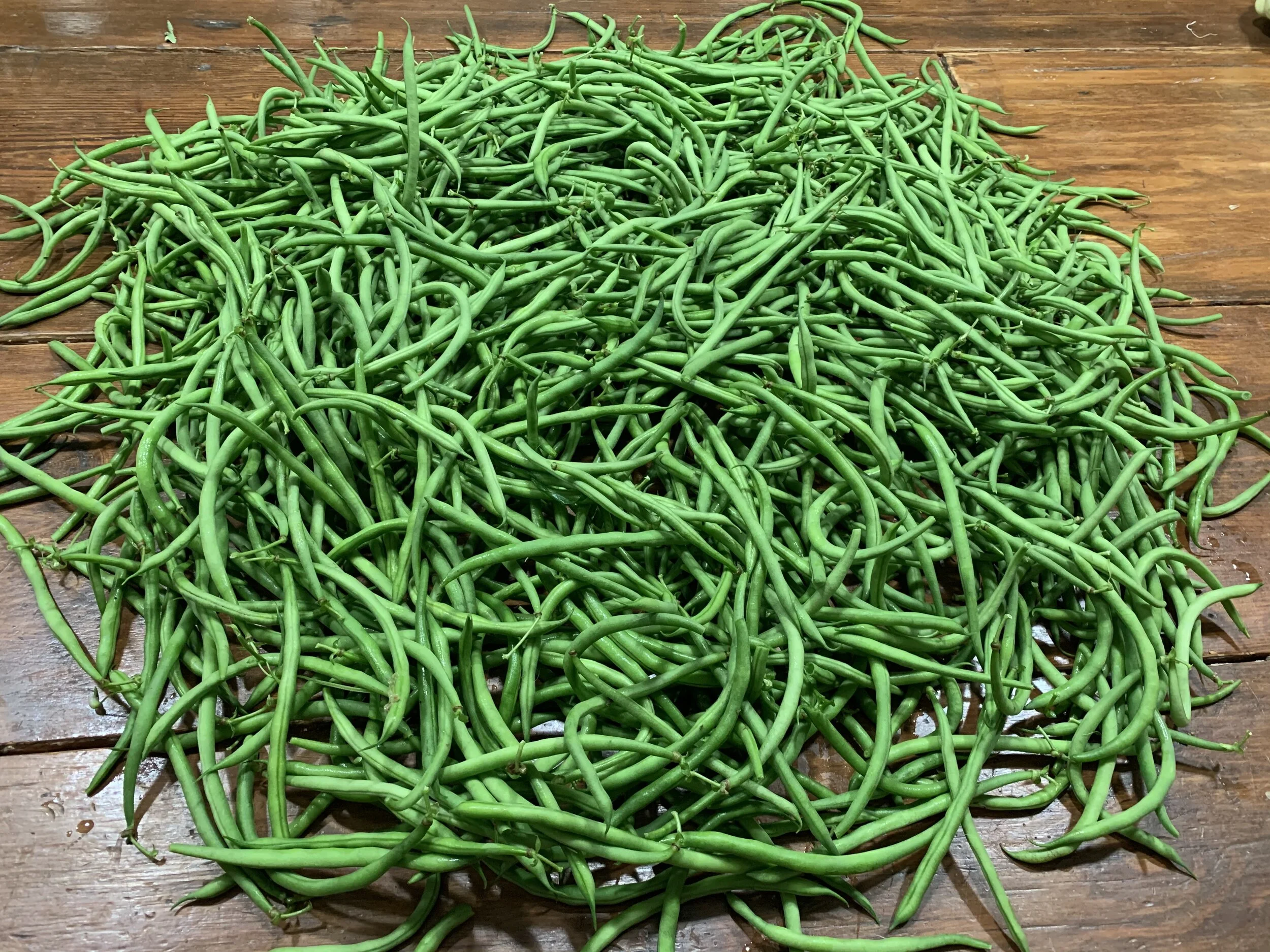
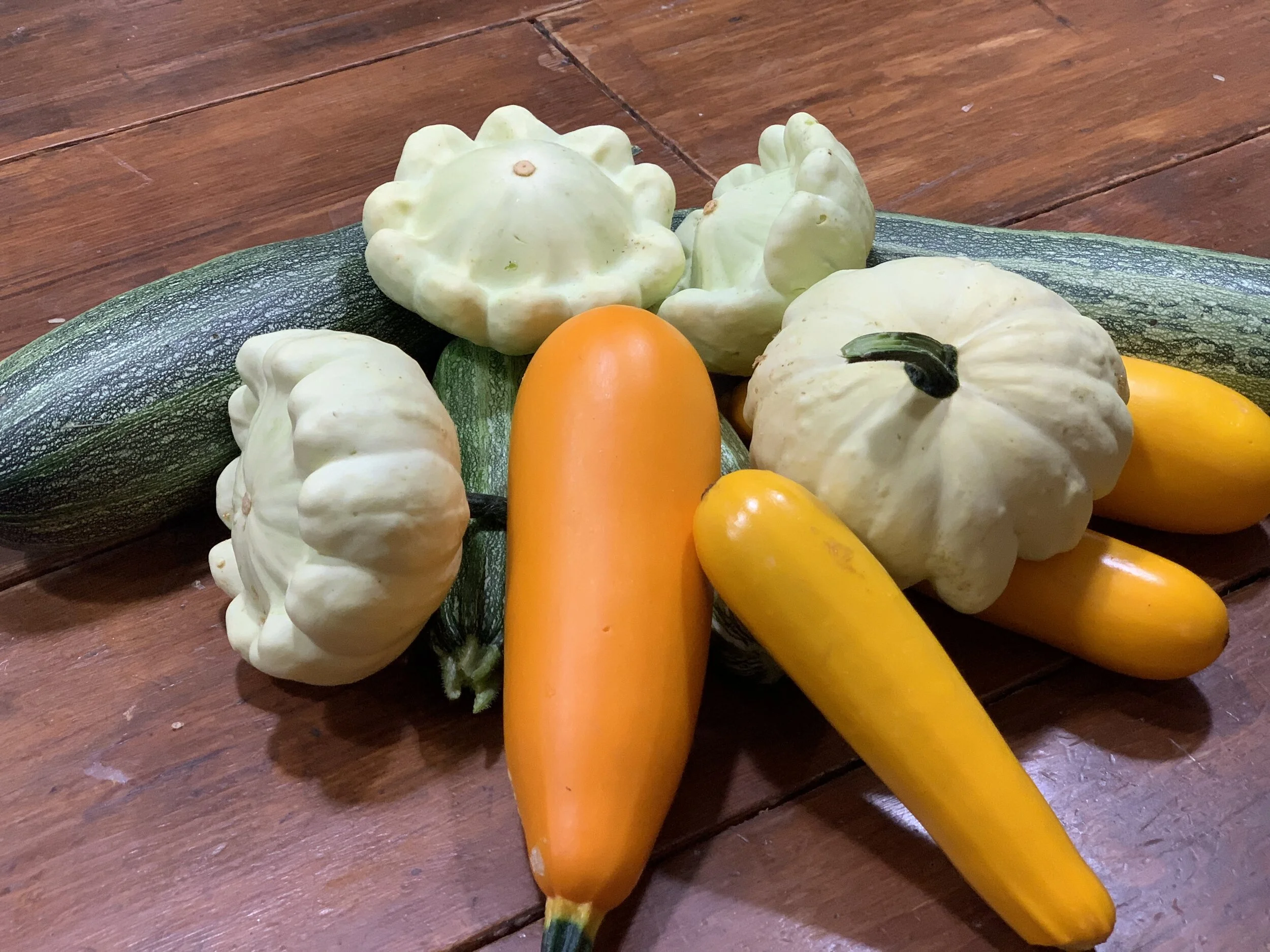
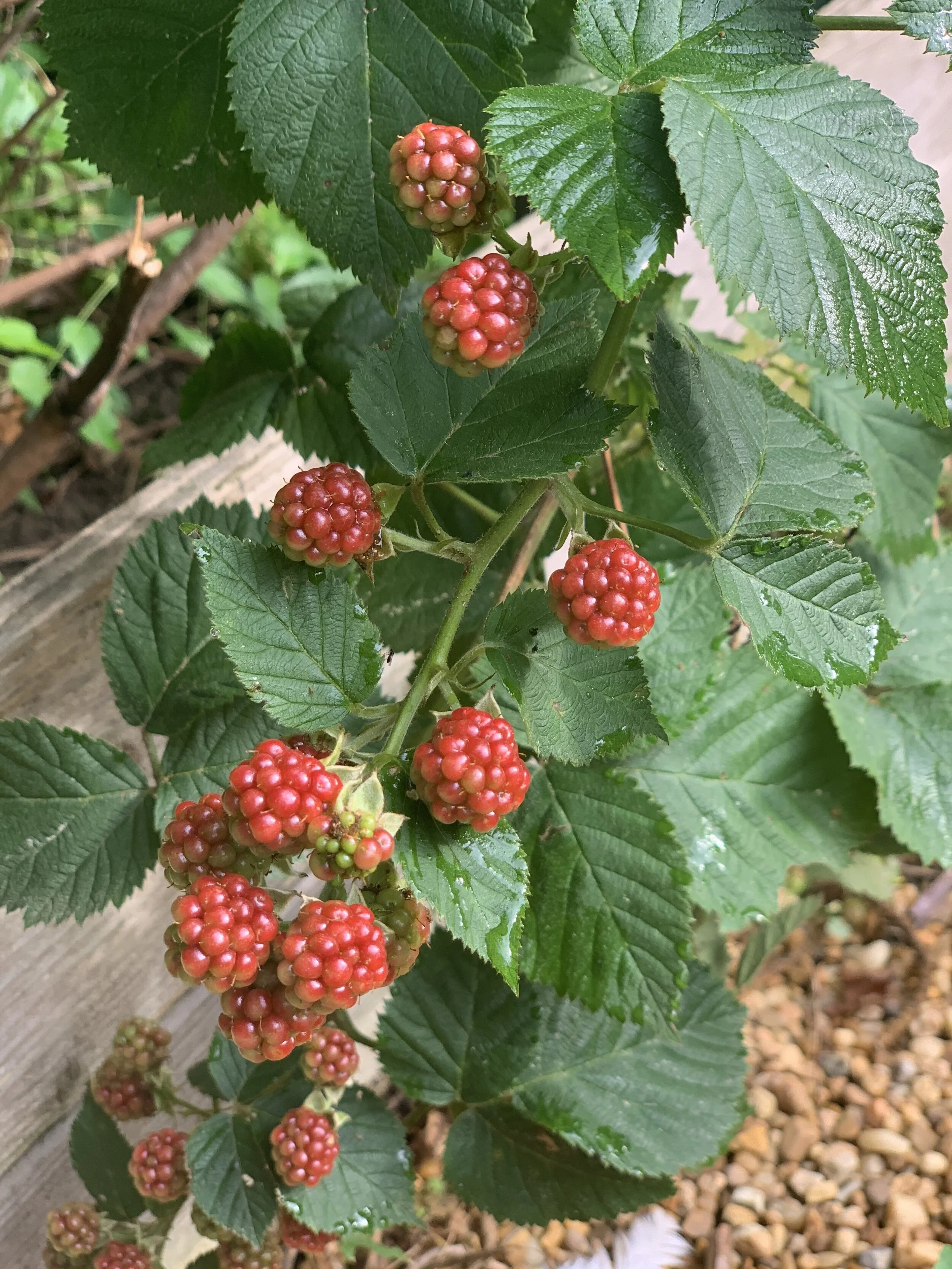
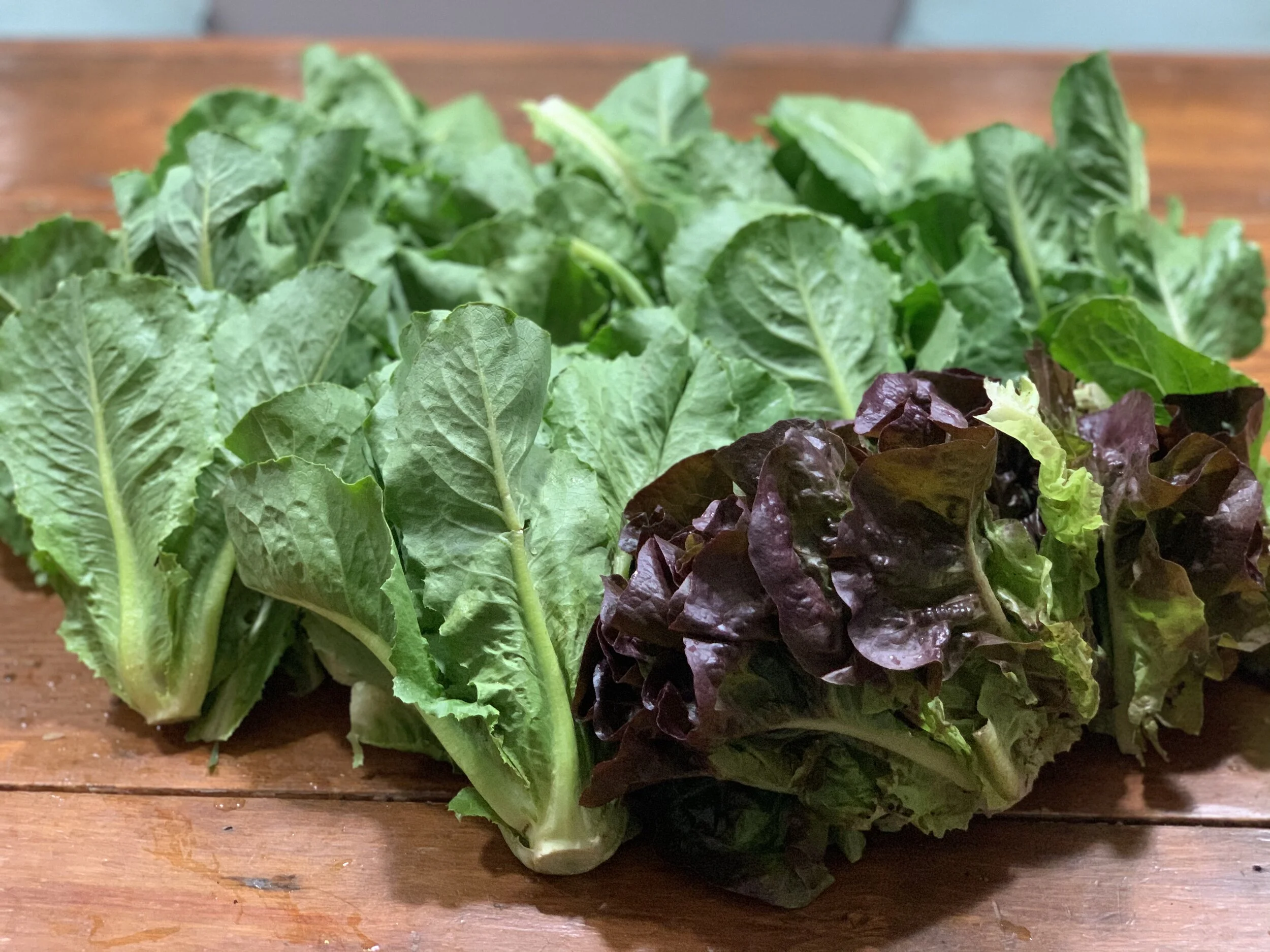













![IMG_1158[1].JPG](https://images.squarespace-cdn.com/content/v1/56e1cc7c8259b5ca8c33d158/1533466822081-1ML80FMHDXS7GK5GNZC9/IMG_1158%5B1%5D.JPG)
![IMG_1173[1].JPG](https://images.squarespace-cdn.com/content/v1/56e1cc7c8259b5ca8c33d158/1533575975476-1UT7EHKO7JDLZC3VGLMO/IMG_1173%5B1%5D.JPG)
![IMG_1175[1].JPG](https://images.squarespace-cdn.com/content/v1/56e1cc7c8259b5ca8c33d158/1533581106296-U6K9D9OCVT40MUSJPWLK/IMG_1175%5B1%5D.JPG)




![IMG_1099[1].JPG](https://images.squarespace-cdn.com/content/v1/56e1cc7c8259b5ca8c33d158/1532310287601-I82CIBEAY2B0L0RW7O36/IMG_1099%5B1%5D.JPG)


![IMG_1107[1].JPG](https://images.squarespace-cdn.com/content/v1/56e1cc7c8259b5ca8c33d158/1532357732300-OV15UXSCQOO04AYYK5ZQ/IMG_1107%5B1%5D.JPG)

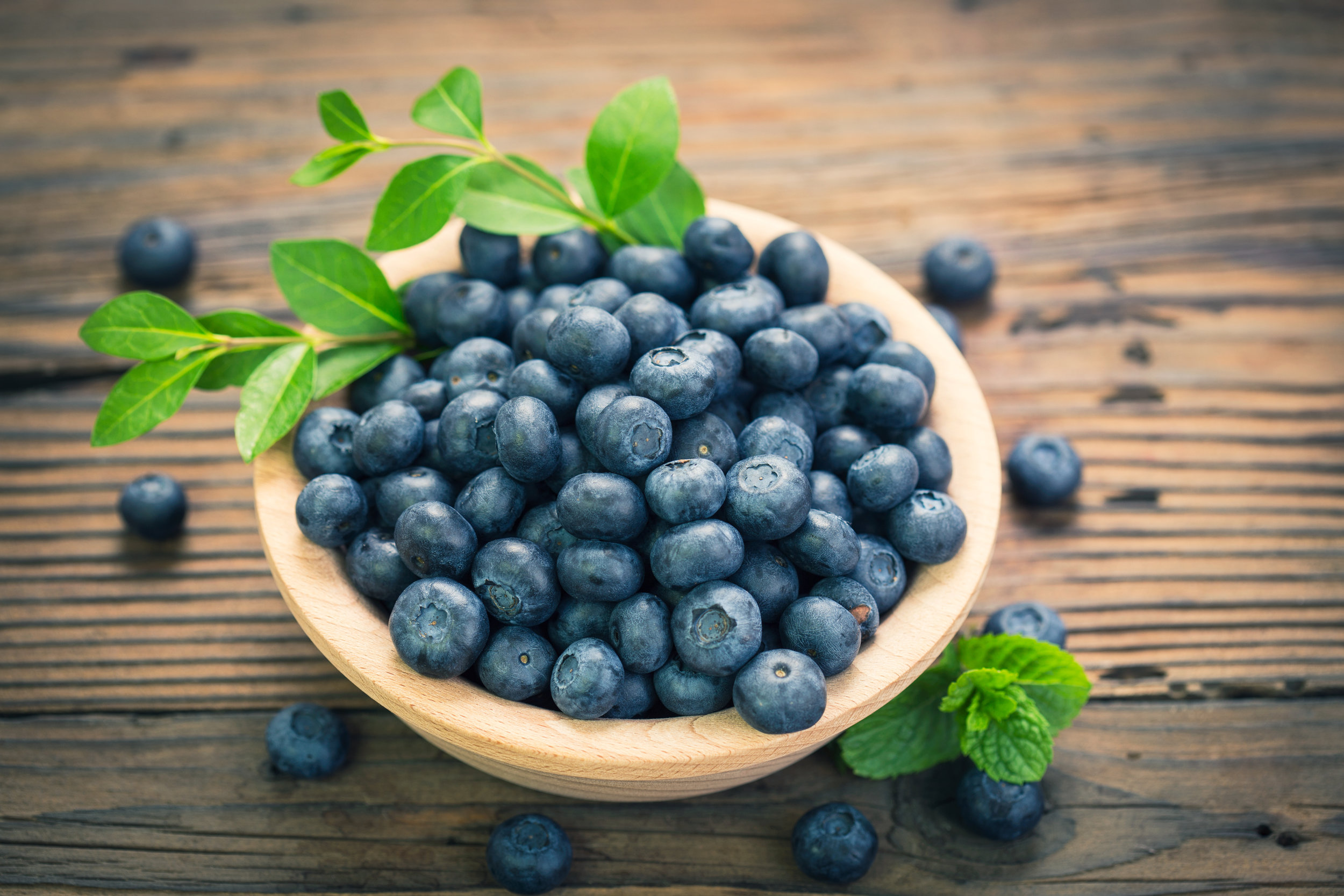
![IMG_0912[1].JPG](https://images.squarespace-cdn.com/content/v1/56e1cc7c8259b5ca8c33d158/1531010606689-5FHBHRT2CP0FHEWOZSLB/IMG_0912%5B1%5D.JPG)
![IMG_0911[1].JPG](https://images.squarespace-cdn.com/content/v1/56e1cc7c8259b5ca8c33d158/1531005778414-2IKNJOLKBSOTUIL4BY2S/IMG_0911%5B1%5D.JPG)





